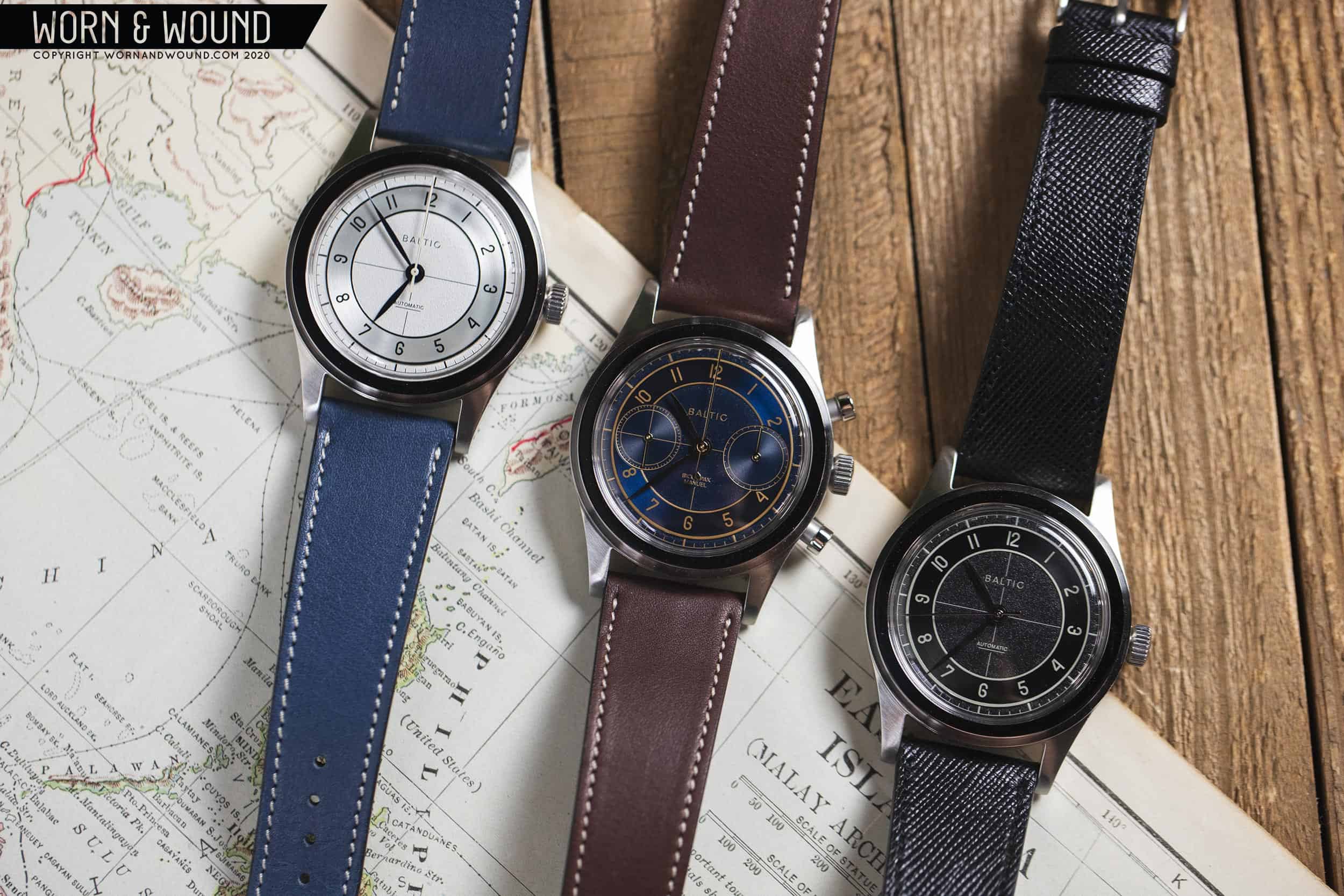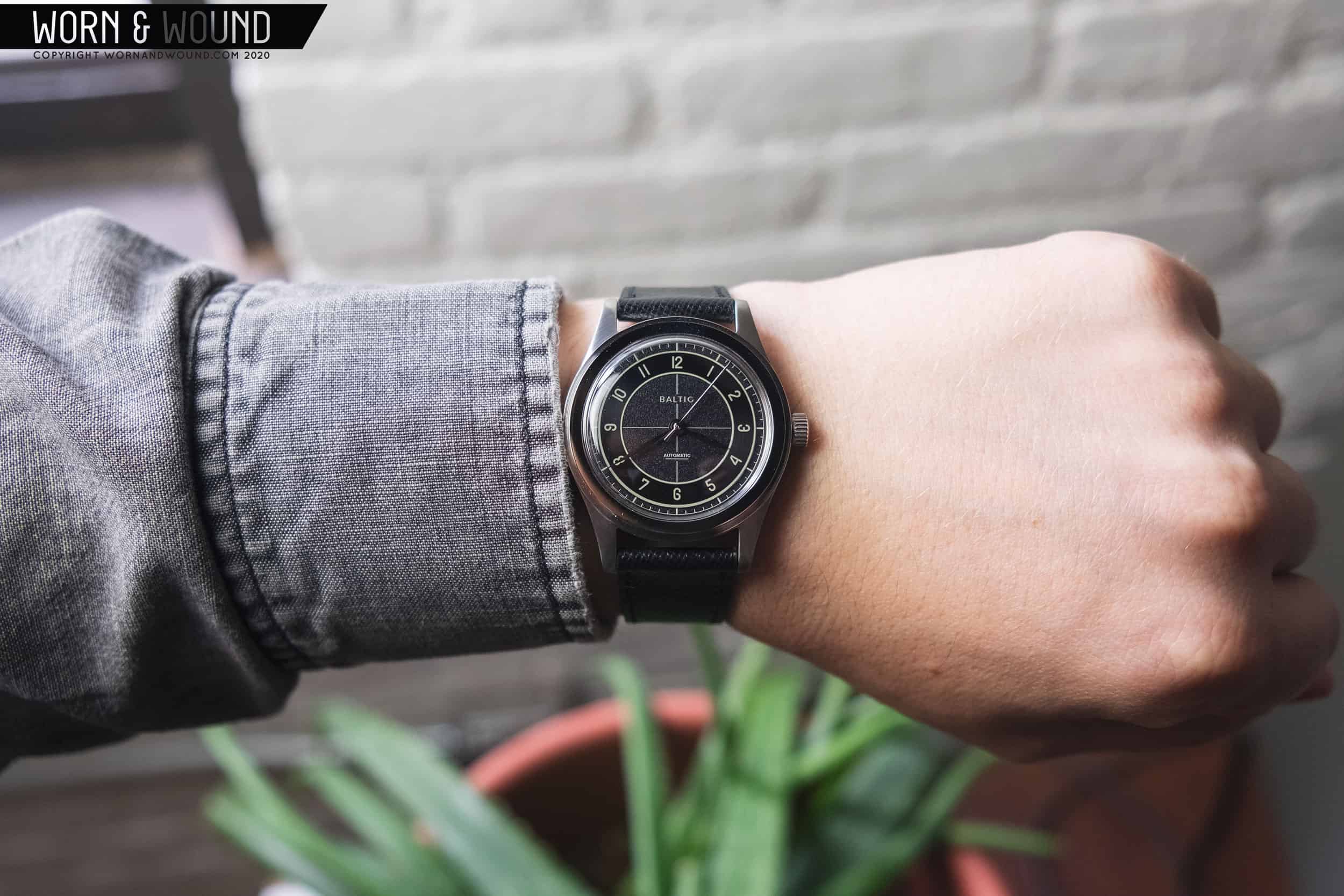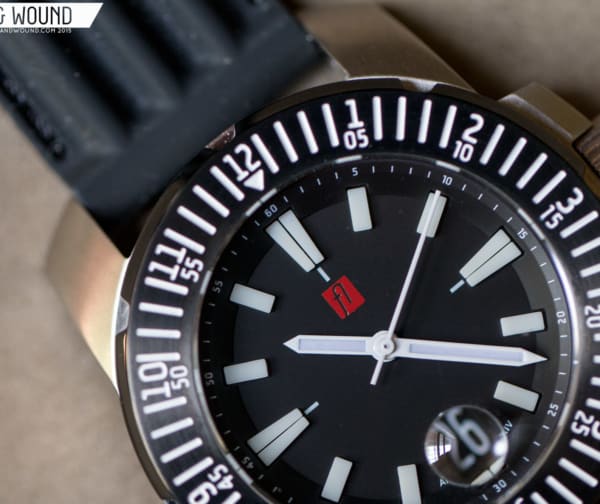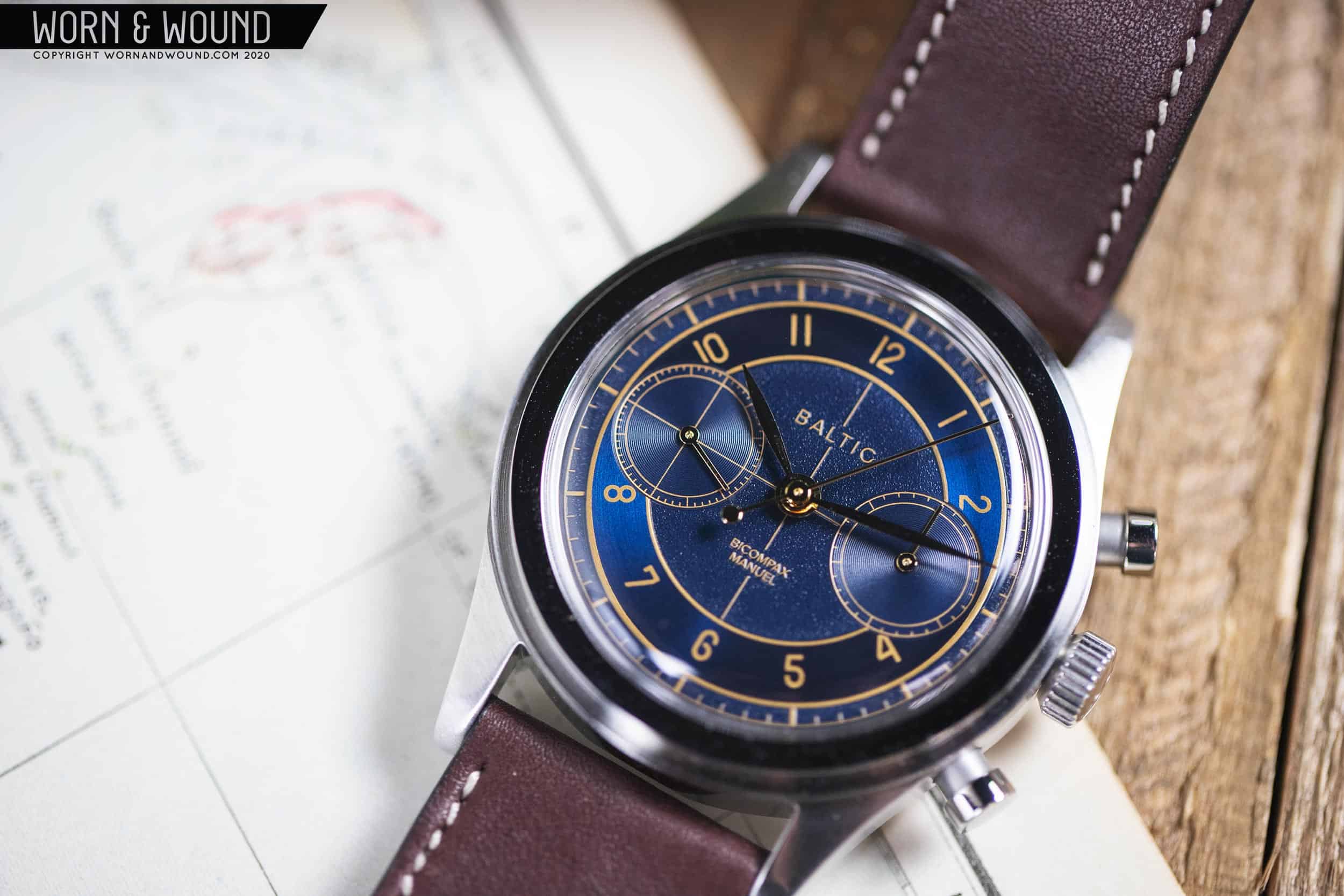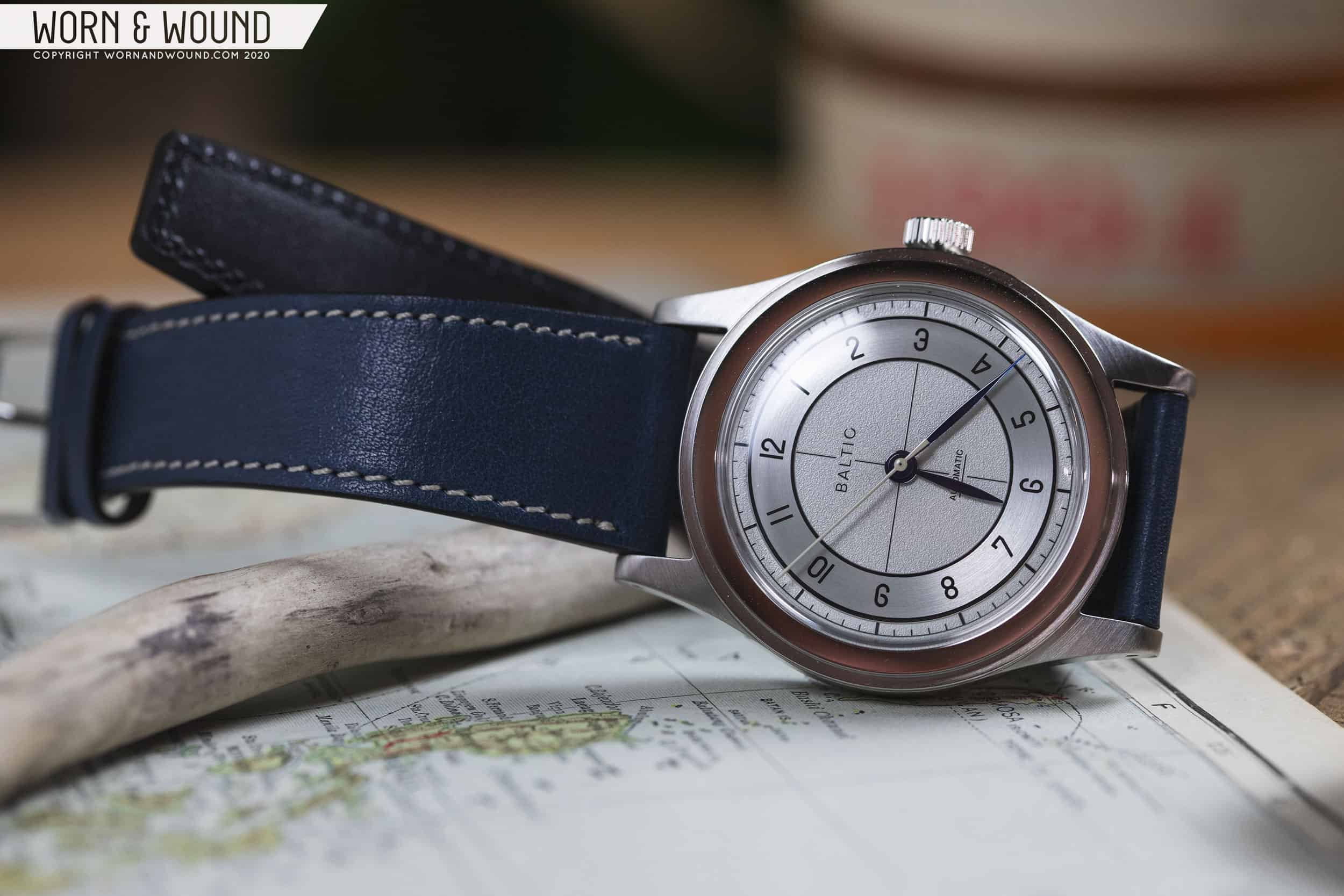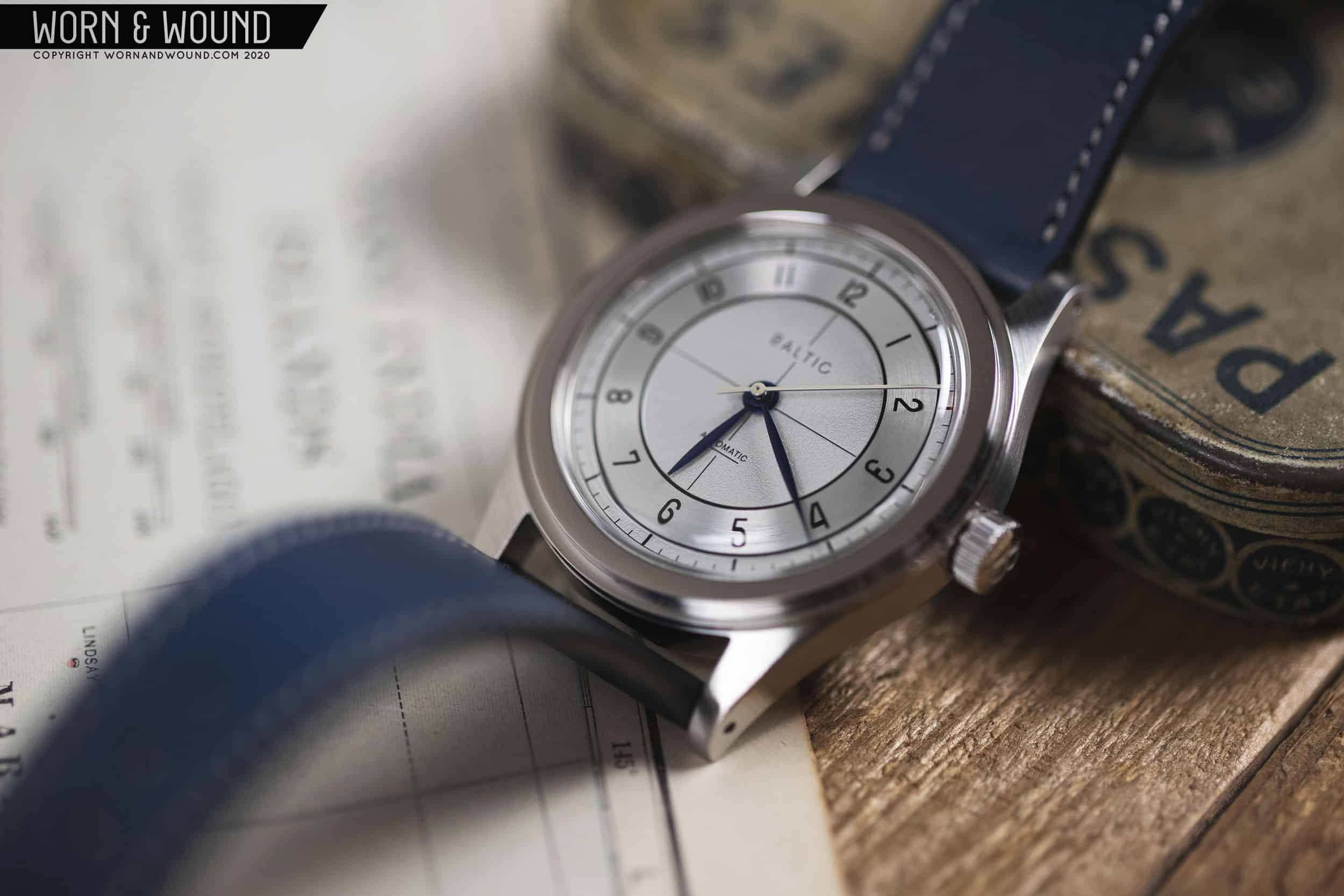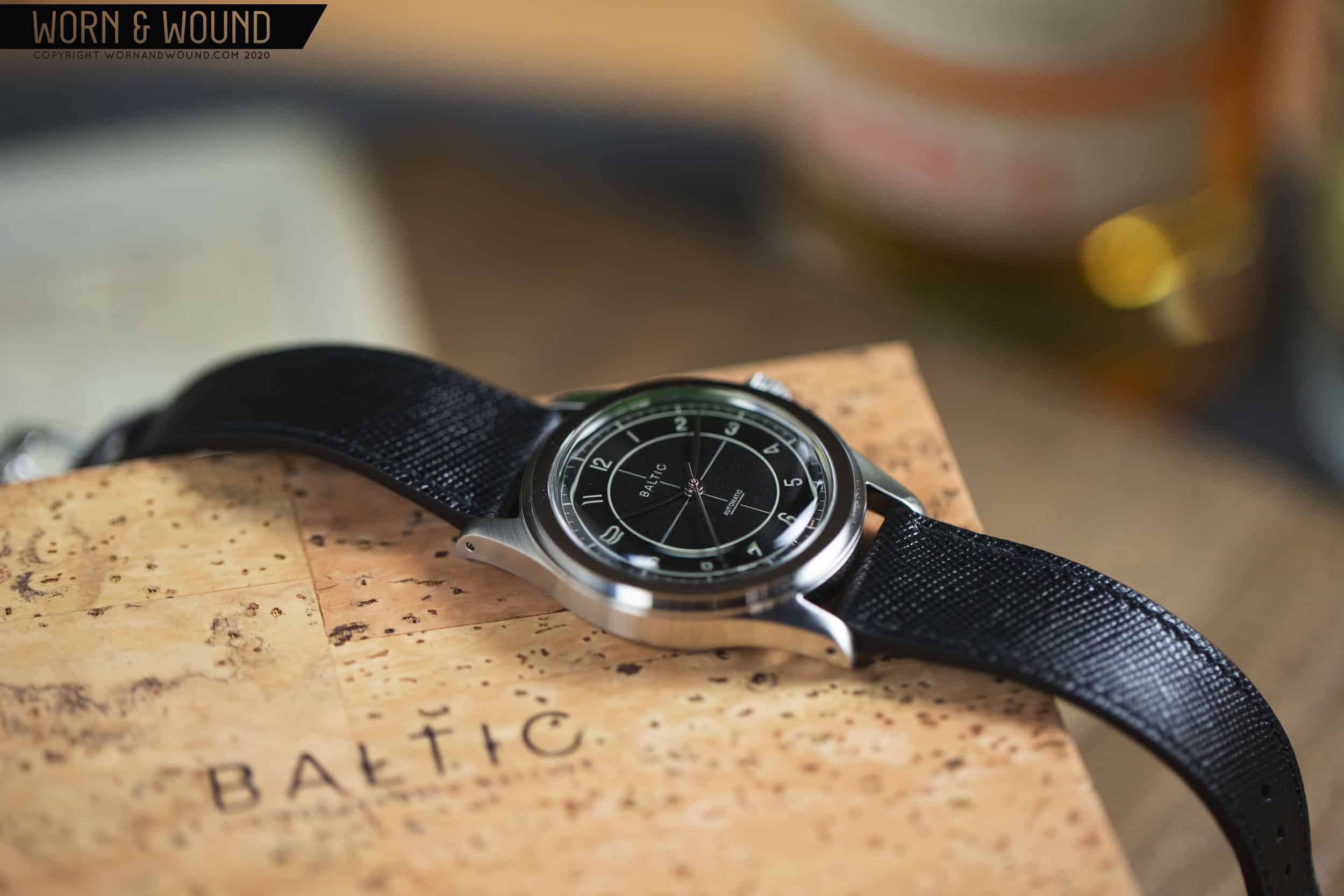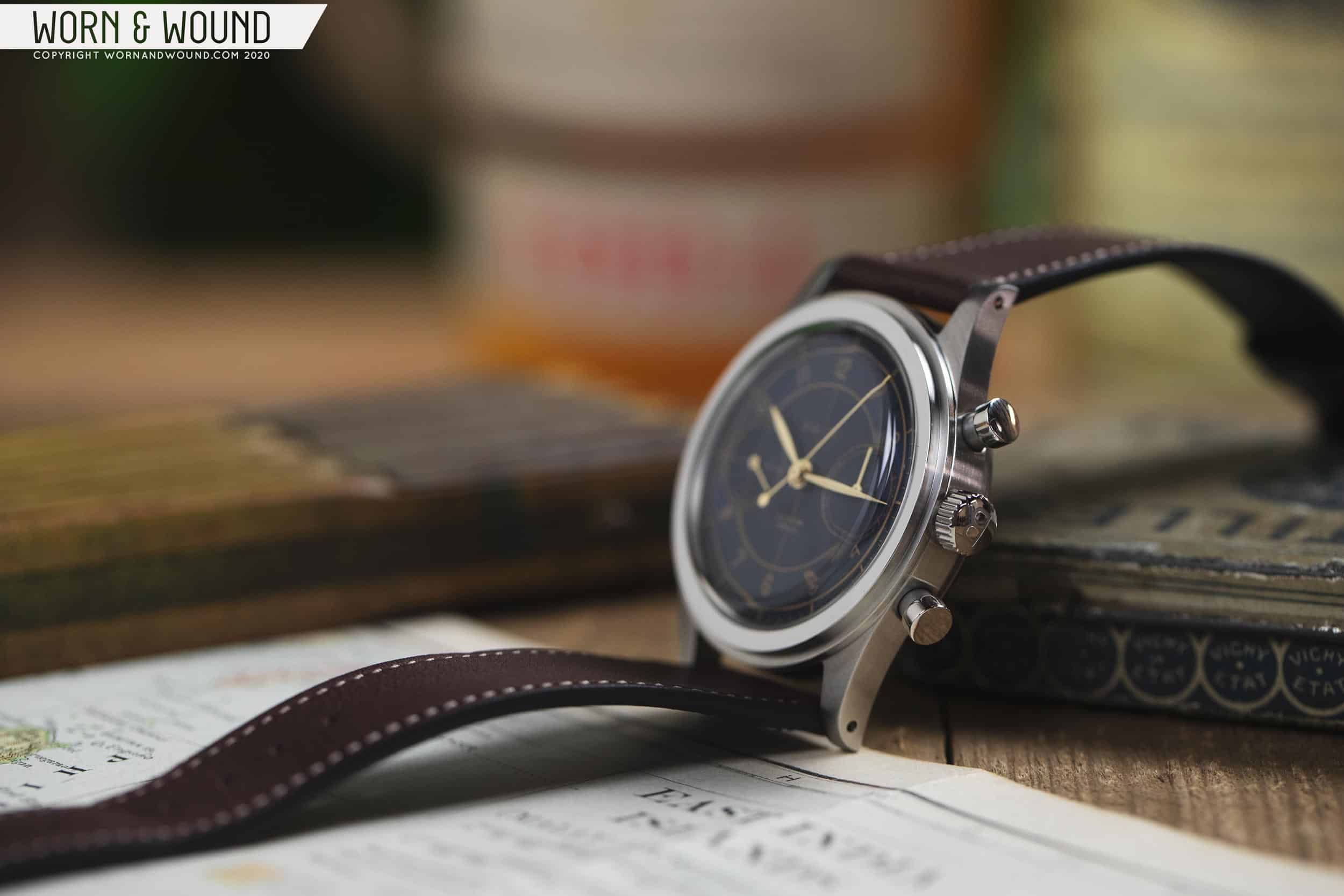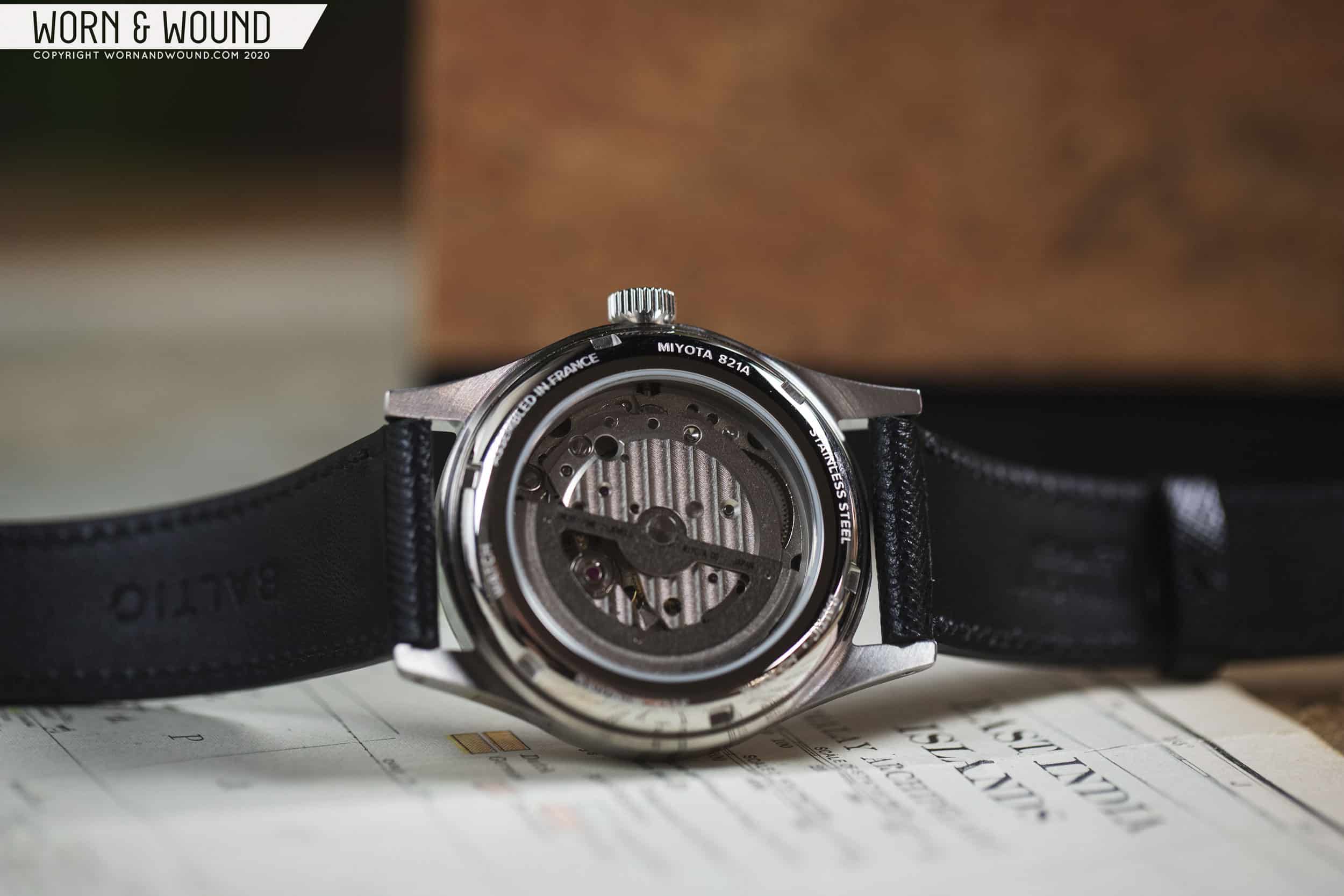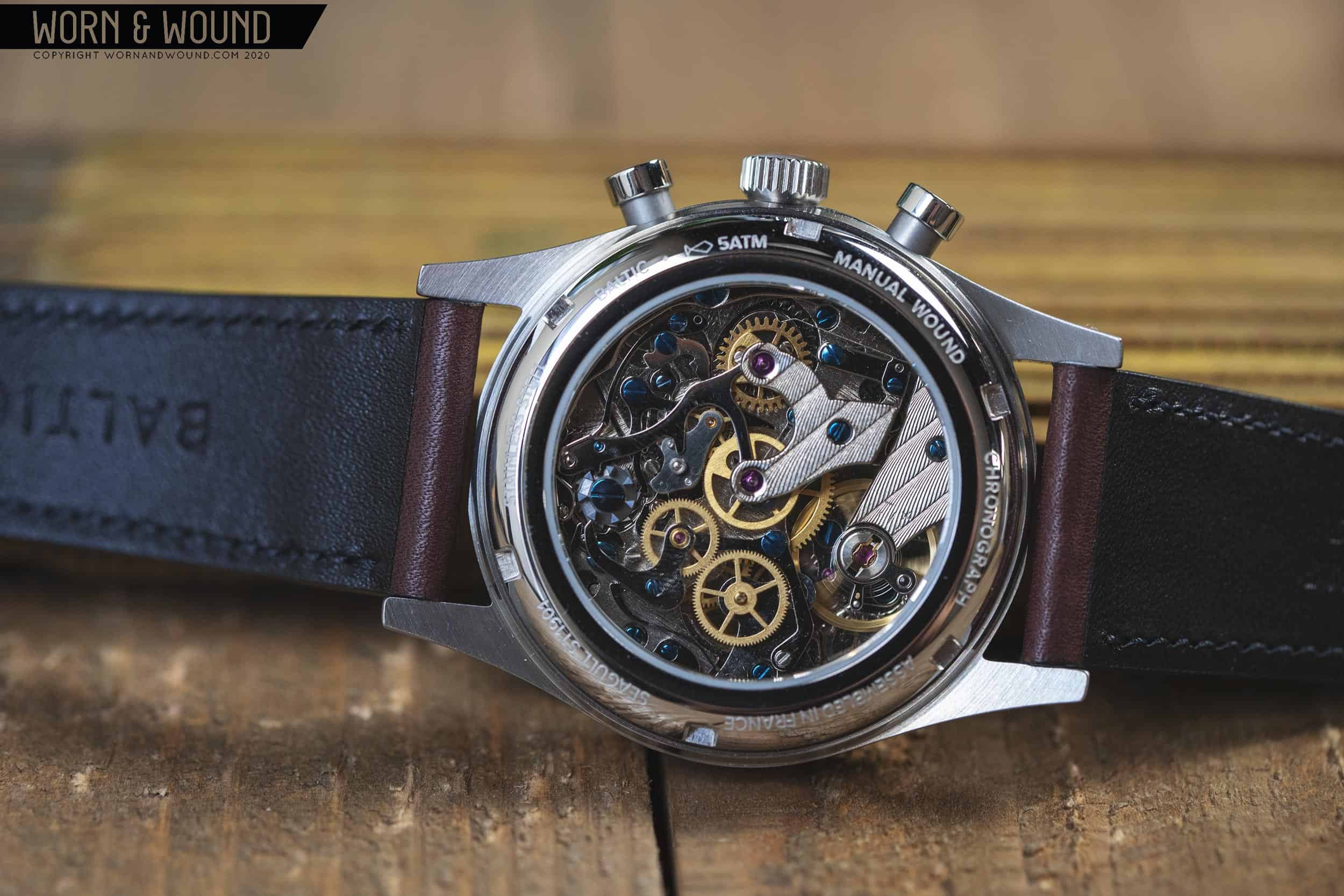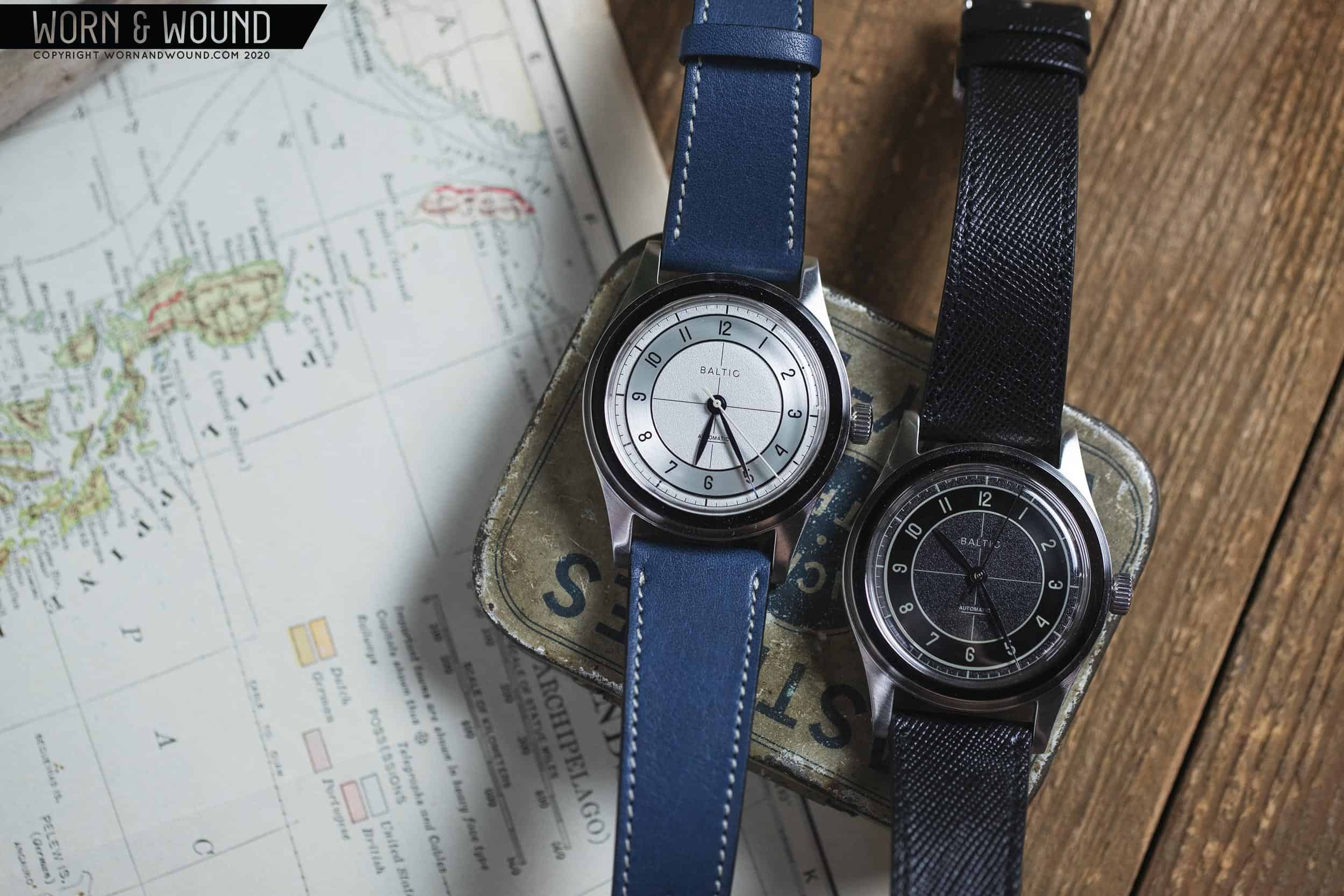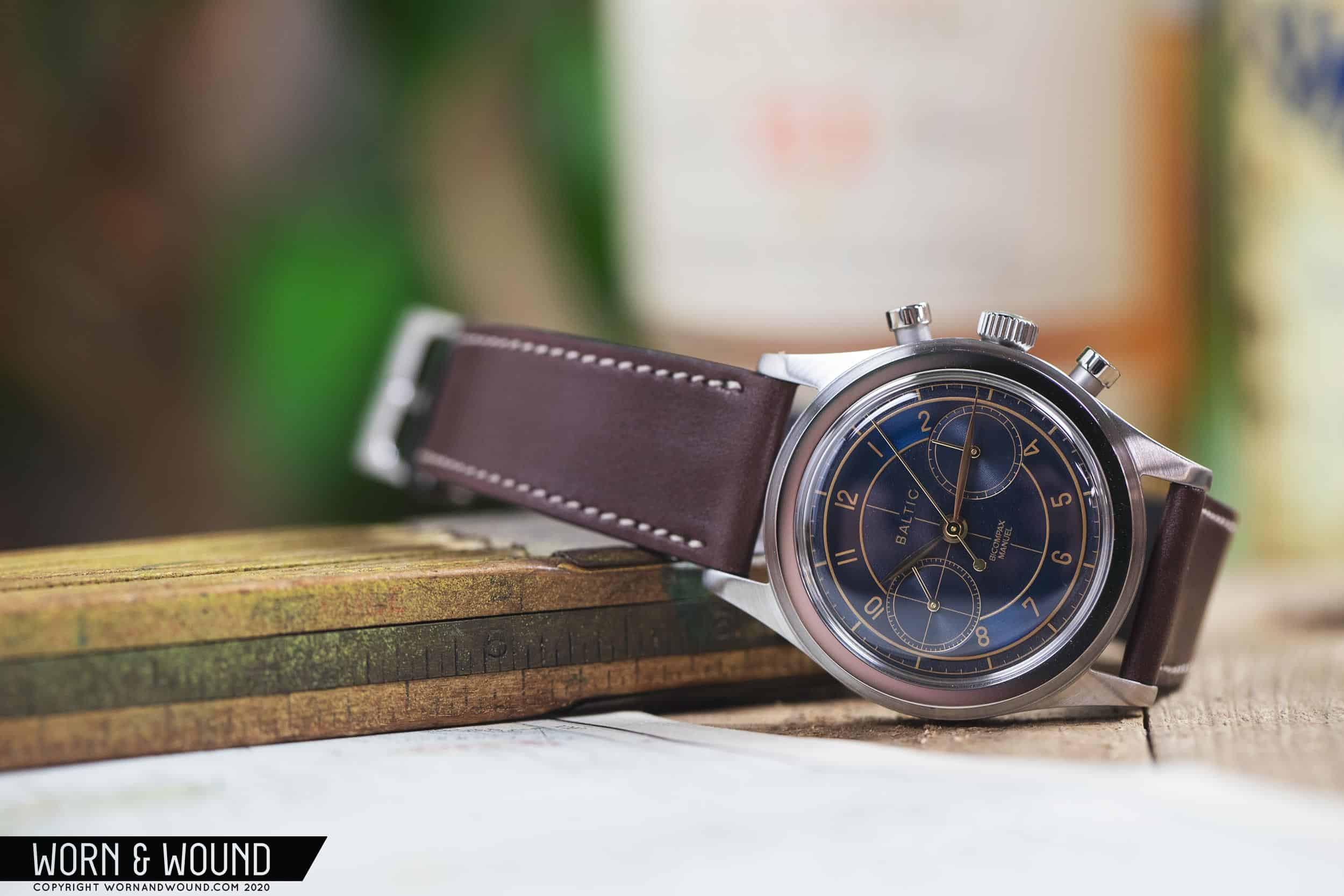There are benefits and drawbacks here. The main benefit, as I see it, is that Seagull is able to produce a chronograph movement (with a column wheel!) at a price that allows a brand like Baltic to fit it into their watch at a sub $1,000 price point. Certainly, other brands have taken advantage of Seagull’s economies of scale as well, and it’s allowed a lot of watch lovers to get a taste of an old school hand wound chronograph, which is as addicting a genre of watches as there is. It’s also an attractive looking movement, and fairly well decorated, and could be a reason to pay the small extra fee to Baltic for a see through caseback.
The drawback is that the Seagull ST1901 really needs to be treated like a vintage movement that was made in the 60s. This is not a robust and durable chronograph caliber – a quick search on ST1901 reliability will reveal that they simply have a tendency to break in ways that modern Swiss and Japanese equivalents don’t.
![]()
That should absolutely not be a reason to hold off on buying a Bicompax, or any other watch using this caliber that you happen to like. But you should handle the Bicompax appropriately – in spite of the chronograph functionality, this is not a sports watch that should be pushed to its limits. If your normal wear pattern is on the careful side, it’s unlikely that you’ll experience anything other than solid timekeeping and reliable functionality. But I’d take this one off before you head to the gym, or change your oil, or move heavy furniture through narrow doorways.
Straps
I don’t often look forward to going over the factory strap options on watches that I review at this price point but I’m pleased to report that Baltic’s straps are of an impressive quality, and certainly wouldn’t be immediately removed for something else in my strap collection if I were to purchase one of these for myself. Furthermore, Baltic offers plenty of options, in a variety of colors and materials.
Of the pairings I sampled, the silver HMS paired with blue French calf leather was my favorite. The color combos work well here, and the leather itself feels great and is of a higher than average quality. The brown calf leather on the Bicompax was similar.
![]()
The black HMS was paired with a black “Saffiano” style leather strap that I also enjoyed. It’s made of the same calf leather as the other straps, but has a fine embossed weave pattern on the top side of the strap that adds some welcome texture and a slightly exotic look. Saffiano leather’s origins can be traced back to Prada handbags, and was originally designed to be water repellent. While I can’t comment as to the straps ability to withstand moisture (I wouldn’t risk it, personally) it certainly retains a bit of the Italian flair that most would associate with Prada. I’m not sure it’s thematically in line with these sector dialed watches derived from designs of the 1940s, but it’s a fun pairing nonetheless.
Conclusion
I really enjoy these watches, and as I mentioned at the beginning of the review, they represent a challenge to my ideas around “vintage inspired” watches in general. As someone who has a deep appreciation for vintage watches and is quite used to their quirks and unique ownership challenges, I find the rudimentary movements used in the HMS and Bicompax to be more charming than problematic. As with anything else, you have to know what you’re getting into. Ultimately, Baltic’s watches feel more authentically like the vintage watches I’m used to wearing than the watches from almost any other brand. The previously mentioned Longines Sector is a good example – that watch looks like a vintage watch from 10 feet away (or even closer, to be honest), but once you start really evaluating it, it’s clearly modern in every sense of the word, it’s just wearing a vintage costume. The Baltic’s are too, I suppose, but the humble specs and overall simplicity of the timepieces themselves make them more convincing and appealing.
A large part of that appeal is the retail pricing and accessibility of Baltic’s product. After currency conversion, the Bicompax comes in at about $640, and the HMS is less than $400. With the HMS in particular, that’s an insanely great value for a watch with this much style and character. These watches are produced by people who really pay attention to the details, and strive to get everything right, and that’s hard to come by at 2-3 times the price of the HMS.
![]()
While I wouldn’t consider myself a convert to vintage inspired watches on a large scale, I have to admit that I’m softening as I get a chance to experience more watches like the HMS and Bicompax. I’m often left with a cold feeling when I evaluate watches that take inspiration from popular (or not so popular) watches from prior generations, but Baltic’s watches are evidence of real design inspiration, and are not simply photocopies of a thing that someone else made years before. From a vintage inspired skeptic, these Baltics have my highest recommendation. Baltic









 Featured Videos
Featured Videos




